Bruce Bagemihlv - Biological Exuberance - Animal Homosexuality and Natural Diversity
Здесь есть возможность читать онлайн «Bruce Bagemihlv - Biological Exuberance - Animal Homosexuality and Natural Diversity» весь текст электронной книги совершенно бесплатно (целиком полную версию без сокращений). В некоторых случаях можно слушать аудио, скачать через торрент в формате fb2 и присутствует краткое содержание. Жанр: Природа и животные, на английском языке. Описание произведения, (предисловие) а так же отзывы посетителей доступны на портале библиотеки ЛибКат.
- Название:Biological Exuberance: Animal Homosexuality and Natural Diversity
- Автор:
- Жанр:
- Год:неизвестен
- ISBN:нет данных
- Рейтинг книги:4 / 5. Голосов: 1
-
Избранное:Добавить в избранное
- Отзывы:
-
Ваша оценка:
- 80
- 1
- 2
- 3
- 4
- 5
Biological Exuberance: Animal Homosexuality and Natural Diversity: краткое содержание, описание и аннотация
Предлагаем к чтению аннотацию, описание, краткое содержание или предисловие (зависит от того, что написал сам автор книги «Biological Exuberance: Animal Homosexuality and Natural Diversity»). Если вы не нашли необходимую информацию о книге — напишите в комментариях, мы постараемся отыскать её.
Biological Exuberance: Animal Homosexuality and Natural Diversity — читать онлайн бесплатно полную книгу (весь текст) целиком
Ниже представлен текст книги, разбитый по страницам. Система сохранения места последней прочитанной страницы, позволяет с удобством читать онлайн бесплатно книгу «Biological Exuberance: Animal Homosexuality and Natural Diversity», без необходимости каждый раз заново искать на чём Вы остановились. Поставьте закладку, и сможете в любой момент перейти на страницу, на которой закончили чтение.
Интервал:
Закладка:
Oral sex of various kinds also occurs in a number of species. This may involve actual sucking of genitals (fellatio between males in Bonobos, Orang-utans, Siamangs, and Stumptail Macaques); licking of genitals (cunnilingus in Common Chimpanzees, Long-eared Hedgehogs, and Kob antelopes; penis-licking in Thinhorn Sheep and Vampire Bats; genital licking in female Spotted Hyenas and male Cheetahs); mouthing, nuzzling, or “kissing” of genitals (female Gorillas, male Savanna Baboons, Crab-eating Macaques, and West Indian Manatees); and genital sniffing in female Pronghorns and Marmots as well as scrotal sniffing in Whiptail and Red-necked Wallabies. Male Stumptail Macaques even perform mutual fellatio in a sixty-nine position, while males of a number of primate species (including Gibbons, Bonnet and Crested Black Macaques, and Nilgiri Langurs) sometimes actually eat or swallow their partner’s (or their own) semen—though usually after mutual genital rubbing or manual stimulation rather than oral sex. 9Dwarf Cavies and Rufous Bettongs occasionally indulge in anal licking, nuzzling, and sniffing with same-sex (and opposite-sex) partners. Another sort of “oral” sexual activity is called beak-genital propulsion and occurs among both male and female Bottlenose and Spinner Dolphins: one animal inserts its snout or “beak” into the genital slit of another, simultaneously stimulating and propelling its partner forward while swimming (a similar behavior in Orcas, involving simple nuzzling or touching of the genitals with the snout, is known as beak-genital orientation).
A male Giraffe mounting another male

Another type of activity found during homosexual interactions is masturbation, in which one animal stimulates its own or its partner’s genitals with a finger, hand, foot, flipper, or some other appendage. For example, male Savanna Baboons often touch, grab, or fondle the genitals of another male—this behavior is known aptly as diddling—while male Bottlenose Dolphins and West Indian Manatees sometimes rub another male’s penis with their flippers. Male Rhesus and Crested Black Macaques, female Gorillas, male Vampire Bats, female Proboscis Monkeys, and male Walruses sometimes masturbate themselves when mounting, courting, or interacting sexually with another animal of the same sex. Mutual masturbation in a side-by-side sixty-nine position occurs in female Crested Black Macaques, while male Bonnet and Stumptail Macaques masturbate each other and even fondle one another’s scrotums. Another form of mutual masturbation in these species involves two males backing up toward each other and fondling each other’s genitals between their legs. In Bonobos and Common Chimpanzees, individuals often rub their anal and genital regions together while in this rump-to-rump position, prompting zoologists to give these behaviors names like “rump-rubbing” and “bump-rump.” Other more unusual forms of “manual” stimulation include mutual genital stimulation using trunks in female Elephants, and anal stimulation and penetration with fingers by male Common Chimpanzees, Siamangs, and Crab-eating Macaques.
Consorts, Satellites, and Triumvirates: Same-Sex Mates and Pair-Bonding
Wild animals often form significant pair-bonds with animals of the same sex. Homosexual pair-bonding takes many different forms, but two broad categories can be recognized: “partners,” who engage in sexual or courtship activities with each other, and “companions,” who are bonded to each other but do not necessarily engage in overt sexual activity with one another. More than a third of the mammals and birds in which homosexual activity occurs have at least one of these types of same-sex bonding. The archetypal example of a “partnership” is the mated pair: two individuals who are strongly bonded to one another in a way that is equivalent to heterosexually paired animals of the same species. Partners engage directly in courtship, sexual, and/or parenting behaviors; they usually spend a significant amount of time with each other; and they do similar activities together. This is found primarily in birds (more than 70 different species)—not surprisingly, since heterosexual pairing is typical of feathered creatures (but generally rare in other animal groups). Examples of homosexual mates are found in male Black Swans and Black-headed Gulls, and female Black-winged Stilts and Silver Gulls (among many others). In mammals, partnerships take many different forms, including “consortships” in female Rhesus and Japanese Macaques, “sexual friendships” in Stumptail and Crab-eating Macaques, “tending bonds” between male Bison, and “coalitions” between male Bonnet Macaques, Savanna Baboons, and Cheetahs. Some animals, while not necessarily forming same-sex bonds, do have “preferred” or “favorite” sexual and affectionate partners with whom they tend to interact more often than with others: this is true for Bonobos, Gorillas, Killer Whales, and Dwarf Cavies, among others.
A mated pair of female Canada Geese
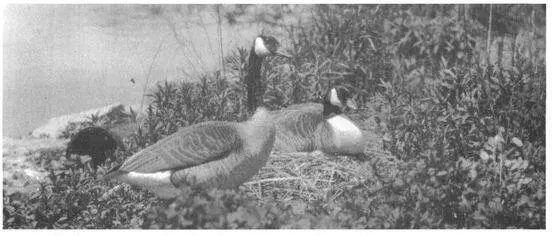
Many forms of same-sex partnership are exclusive or monogamous, and partners may even actively defend their pair-bond against the intrusion of outside individuals (for instance in male Gorillas, female Japanese Macaques, and male Lions). Animals of the same sex sometimes also compete with each other for the attentions of homosexual partners, as in male Gorillas and Blue-winged Teals; female Orang-utans, Japanese Macaques, and Orange-fronted Parakeets may even compete with males for “preferred” female partners. Some partnerships, however, are “open” or nonmonogamous: female Bonobos and Rhesus Macaques, for instance, may have sexual relations with several different “favorite” partners or consorts (of both sexes). Males in homosexual pairs of Greylag Geese, Laughing Gulls, Humboldt Penguins, and Flamingos sometimes engage in “promiscuous” copulations with birds (male or female) other than their mate (heterosexual pairs in these species are also sometimes nonmonogamous). Another form of nonmonogamy occurs among lesbian pairs in a number of Gulls and other birds: one or both females sometimes mate with a male (while still maintaining their same-sex bond) and are thereby able to fertilize their eggs and become parents.
The second main type of homosexual pairing is the “companionship.” Two animals of the same sex may bond with each other, often spending most of their time together exclusive of the opposite sex, but they do not necessarily engage in recognizable courtship or sexual activities with each other. For example, older African Elephant bulls sometimes form long-lasting associations with a younger “attendant” male: these animals are loners, spending all their time with each other rather than with other Elephants, helping each other, and never engaging in heterosexual activity. Male Calfbird companions display and travel together and also sometimes share a “home” with one another (a special perch known as a retreat where they spend time away from the display court). Similar same-sex associations are found in many other species, including Orang-utans, Gray Whales, Grizzly Bears, Vampire Bats, and Superb Lyrebirds. Younger same-sex attendants are known as satellites in male Moose and shadows in male Walruses, while companions are called duos in male Hanuman Langurs and spinsters in female Warthogs—the latter is something of a misnomer, though, since Warthog companions do occasionally participate in sexual activity with males or females, but not necessarily with their companions.
Читать дальшеИнтервал:
Закладка:
Похожие книги на «Biological Exuberance: Animal Homosexuality and Natural Diversity»
Представляем Вашему вниманию похожие книги на «Biological Exuberance: Animal Homosexuality and Natural Diversity» списком для выбора. Мы отобрали схожую по названию и смыслу литературу в надежде предоставить читателям больше вариантов отыскать новые, интересные, ещё непрочитанные произведения.
Обсуждение, отзывы о книге «Biological Exuberance: Animal Homosexuality and Natural Diversity» и просто собственные мнения читателей. Оставьте ваши комментарии, напишите, что Вы думаете о произведении, его смысле или главных героях. Укажите что конкретно понравилось, а что нет, и почему Вы так считаете.
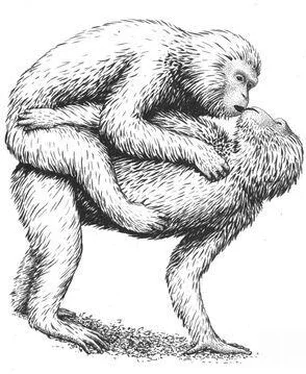

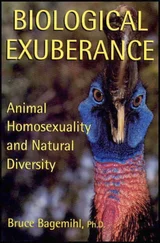
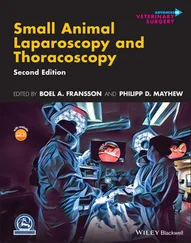
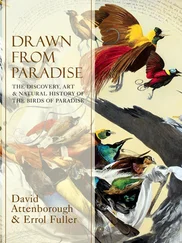

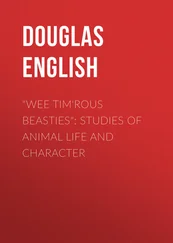
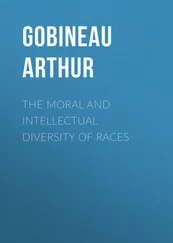
![Various - Birds and Nature, Vol. 10 No. 1 [June 1901]](/books/745231/various-birds-and-nature-vol-10-no-1-june-1901-thumb.webp)
![Various - Birds and Nature Vol. 10 No. 5 [December 1901]](/books/745236/various-birds-and-nature-vol-10-no-5-december-1-thumb.webp)

![Various - Birds and Nature, Vol. 12 No. 5 [December 1902]](/books/745517/various-birds-and-nature-vol-12-no-5-december-thumb.webp)
![Various - Birds and Nature Vol. 11 No. 2 [February 1902]](/books/745533/various-birds-and-nature-vol-11-no-2-february-1-thumb.webp)